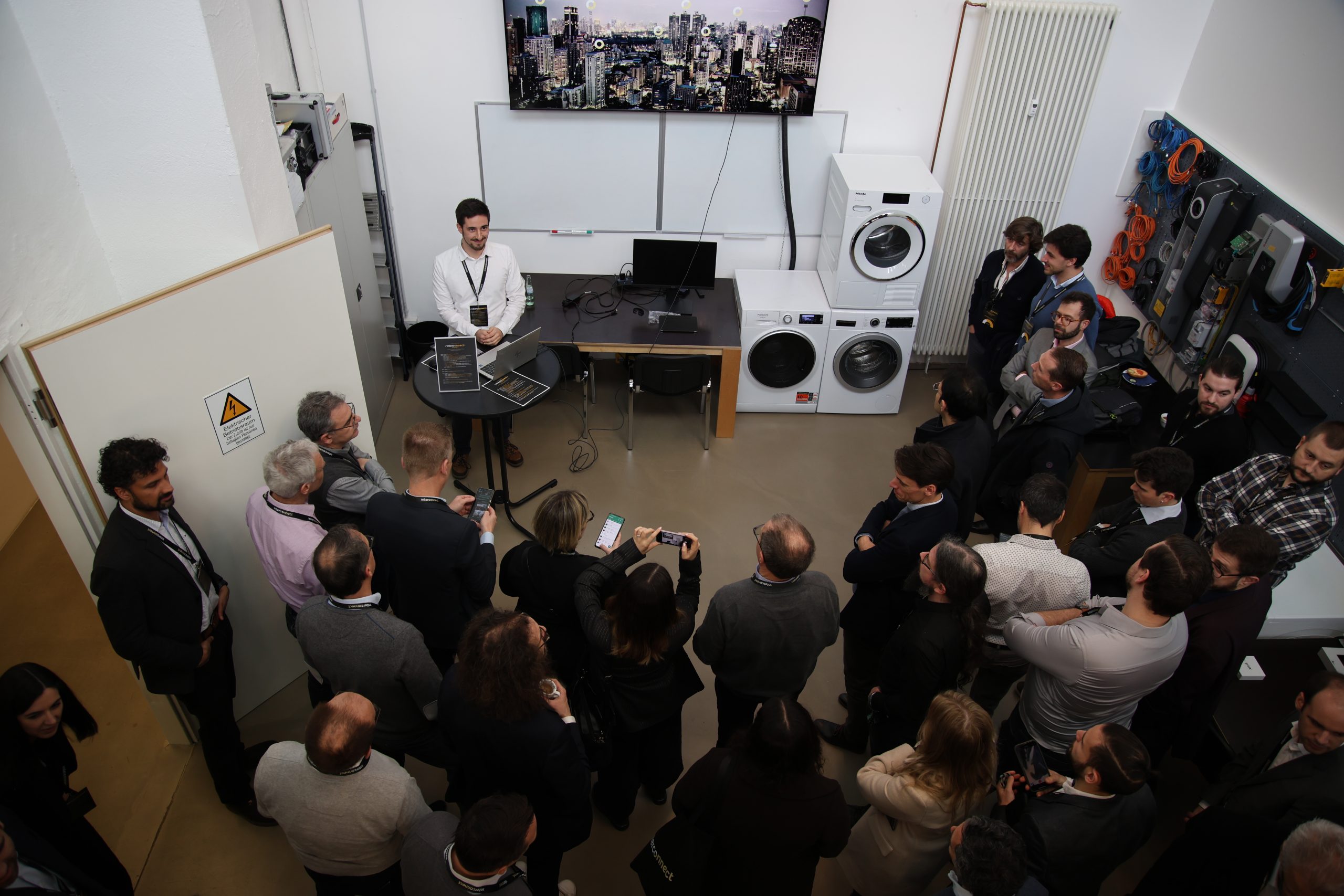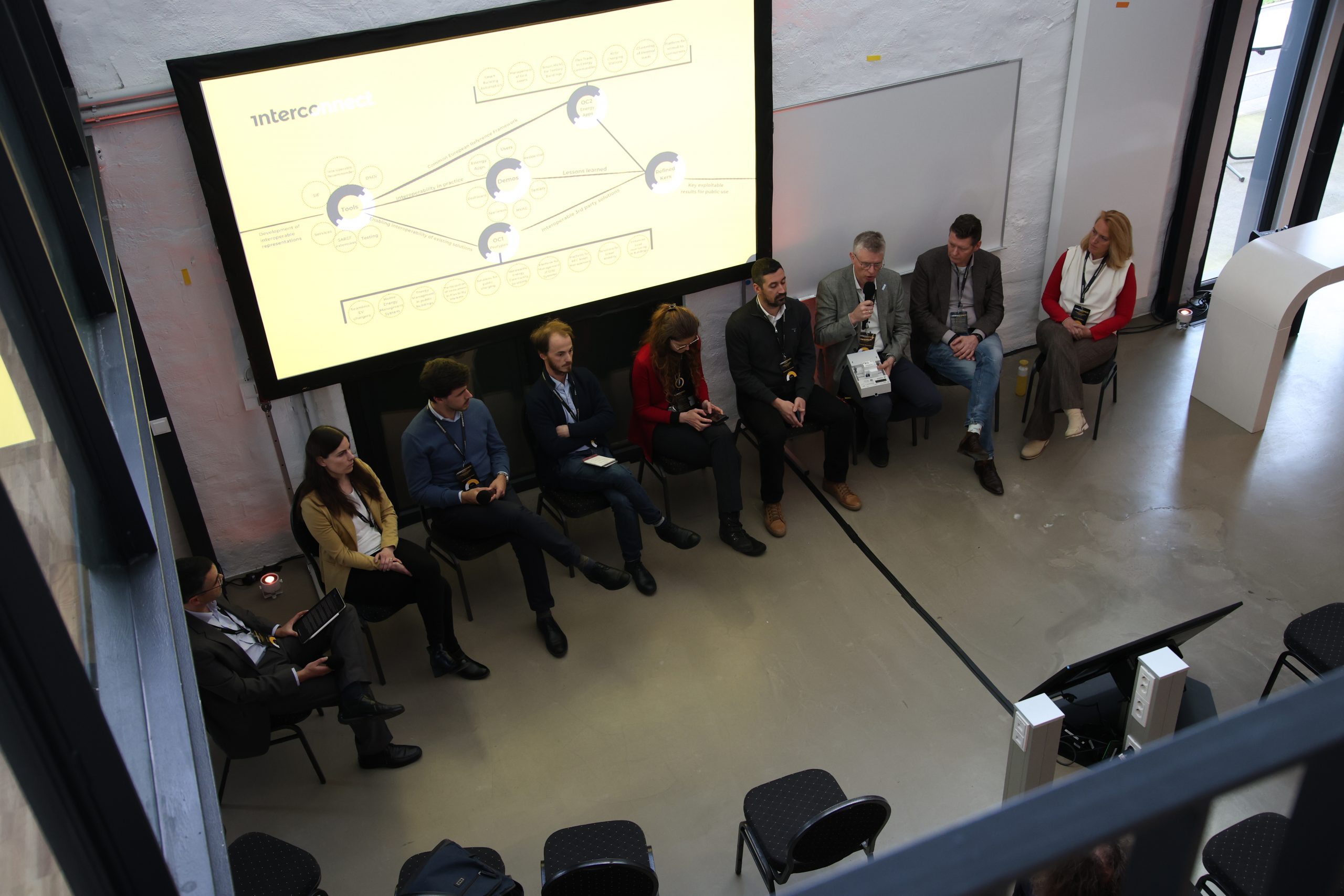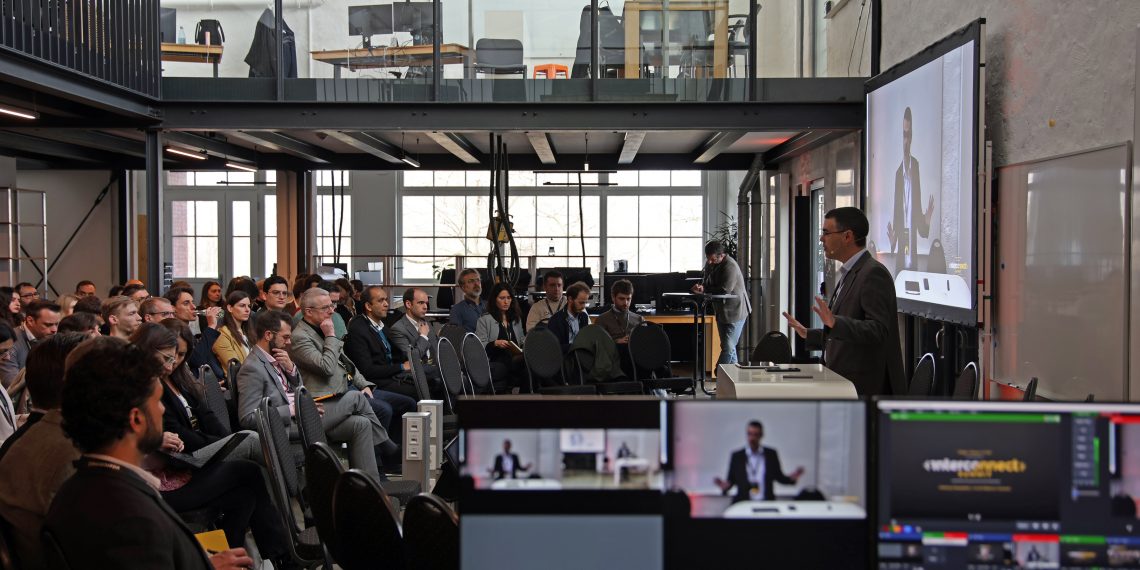Portugal addressed the European Commission’s call for the creation of digital and interoperable buildings and electrical grids in Europe. The Institute for Systems and Computer Engineering, Technology and Science (INESC TEC) led the activities for four and a half years, with a budget of €36M and 50 partners, which include manufacturers, research institutions, distribution grid operators, IoT and ICT providers, retailers and final consumers. The outcome? A set of innovative results that will provide interoperability to homes and buildings, i.e., without the need to depend on a specific equipment manufacturer, so that devices, systems, and users can interact in a transparent and sustainable. All this within the context of the European project InterConnect.
Interoperability is the keyword; and the future of digital and intelligent systems integration starts here, as it allows different technologies to support energy (e.g., electric vehicle charging) or non-energy (e.g., data sharing, convenience, security) services in the context of buildings and electric grids. In this sense, the EU project InterConnect used consumer-centred applications to improve energy use, contributing to greater resilience of the electricity grid, using interoperable technologies. Semantic-based interoperability has been validated in different countries and contexts.
The basis of all results is the created Semantic Interoperability Framework (SIF). It was the starting point for developing interoperable technologies and services that were demonstrated on seven large-scale pilots in Portugal, Belgium, Germany, the Netherlands, Italy, Greece, and France. Each pilot came with specific features: the goal of testing solutions with residential consumers (as in Portugal, for example, where E-REDES was responsible for this demonstration), or in service/commercial buildings (as in the case of SONAE MC or ELERGONE, which tested solutions in several Continente supermarkets). However, the goal was always the same: to use interoperability to integrate the different solutions, regardless of the nature of the pilot (commercial or residential), and the different solutions provided by the manufacturers of the project (Daikin, Vaillant, Wirelane, Miele, B/S/H, ABB, OpenMotics, Whirlpool, Schneider Electric and ThermoVault).
“Consumers in the European Union are benefiting from the results of the InterConnect project. Our results grant them access to new features, provided in a simple and direct way by manufacturers, integrators, and service providers, which facilitate the optimised energy management of their devices and systems”, explained INESC TEC researcher and project coordinator, David Rua.

The worldwide contribution to the integration of interoperability in the power grid
Based on the SIF, there were two additional project outcomes that represent a contribution to worldwide research and innovation in this field: an interface for interaction with distribution grid operators and a recommendation system for European consumers to manage energy use in their buildings, ensuring the resiliency of the European electrical system.
The first, called DSOi (Distribution System Operator Interface), is a cloud-hosted platform that enables access to the provisioning of flexibility services, ensuring new data-driven products to smart energy homes, buildings, and citizen communities in emerging markets through a fully interoperable and replicable interface. The ability to increase the observability of the electric grid was one of the use cases with a positive impact for operators.
The second, called Interoperable Recommender (IR), emerged from the need to address the current energy crisis caused by the war in Ukraine, and to ensure a consumer-centred solution that places them at the forefront of supporting the efficiency and resilience of the EU power grid. In this sense, the project supported the Common European Reference Framework and its blueprint to allow the development of applications able to provide recommendations for savings and active energy management aimed at EU consumers. The RI is a data-driven solution that establishes the participation of consumers from the different EC member states in improving the resilience of the European energy infrastructure. This service harnesses the potential of innovative data-driven algorithms and leverages the publicly accessible ENTSO-E Transparency Platform to assess country-specific vulnerabilities related to the increasing electrification of energy consumption.
“The role of INESC TEC, as a leading scientific research institution, was crucial in creating methodologies for semantic interoperability, developing algorithms, and providing support for the use of the project’s tools – namely in terms of their modular and transparent integration”, stated David Rua.

The energy applications developed by the project
The InterConnect project led the development of three energy applications; the Wattch.r (Portugal), Flexi App (Italy), and the Greek pilot’s InterConnectGR are already available. The Portuguese application makes use of the three main joint results of the project: SIF, DSOi and IR. Wattch.r, available on Google Play and the Apple Store, is currently accessible to selected participants, so they can obtain information on how they can better support the grid and electrical system operation. It provides daily suggestions that help consumers reduce their carbon footprint by adopting more sustainable behaviours and presents recommendations to increase/reduce electricity consumption based on security of supply at EU level.
The Portuguese market also features the improved Continente Plug&Charge app, with new features like the Happy Hour – with different discounts for consumers who want to charge their electric vehicles while going to the supermarket. The app is currently in the pilot stage at Continente Matosinhos, Continente Évora and Continente Amadora supermarkets. After the initial phase, the goal is to expand it to all stores with a Continente Plug&Charge service. This initiative was developed by MC, through Elergone Energia, with INESC TEC and EFACEC. The algorithms used, developed by INESC TEC, resort to AI and combine the prediction of photovoltaic production and capacity of charging points, establishing an optimisation strategy for discounts.
The InterConnect project went further: extending its scope to more countries and more partners through a funding mechanism called cascade funding – with a budget of €2M. The second open call brought seven more subprojects from seven different member states of the project consortium, expanding the context of supporting the resilience of the European electricity system through the participation of different consumers. The companies involved have developed their applications and integrate their technologies in an interoperable way to support the resilience of the European electricity system, using the different results of the project.

The final event – “Advancing interoperability in the EU Reference Framework”
The final event of the project – “Advancing interoperability in the EU Reference Framework”, took place in Cologne (Germany), on February 27 – at the premises of EEBUS, the German partner responsible for the German pilot. “Are we ready for interoperability?” was the base premise of the event. David Rua opened the session, explaining how the project paved the way for interoperability, contextualising what had been done throughout the four and a half years of the project: from defining use cases to using the results of joint exploration in the project’s pilots.
Patricia Arsene, project officer of the project and policy officer at the European Commission’s Directorate-General for Communications Networks, Content, and Technology (DG CONNECT) attended the event, providing the EC’s vision on how interoperability must be promoted in the European context. Georgios Takoudis, from EC’s Directorate-General for Energy (DG ENER), also attended the event, highlighting the code of conduct and its role for interoperability and continuity of the project’s actions.
The first panel discussion, “Interoperability is not an island”, was moderated by Luís Seca, member of the Executive Board at INESC TEC; the session’s participants aimed to provide different outlooks, in terms of research – Fábio Coelho and Josef Baumeister from INESC TEC –, industry – Robert Bohm (EEBUS) and Jo Vandale (Daikin) –, and policy-making– Isabel Gonzalez Cuenca and Nikoleta Andreadou from the Joint Research Center (JRC).
The lunch break was mostly used for the technological demonstration of some of the project’s results, namely the solutions tested in four of the seven pilots – German, Greek, Portuguese, and Dutch. The demonstrations took place at the EEBUS living lab.
The event focused on the project’s results during the afternoon as well: Lucija Rakocevic from Th!nk-E provided context on how interoperability was implemented on the ground by the seven large-scale pilots. Then, it was time to explore the lessons learned throughout the process and how the future was being prepared. David Rua led the panel discussion which included representatives from all pilots: Darja Skrt Georgiev (CyberGrid) for the overarching pilot; Carlos Damas Silva (E-REDES) representing the Portuguese pilot; Stefano Fava (Planet Idea) from the Italian pilot; Anais Galligani (Yncrea) from the French pilot; Donatos Stavropoulos (GRIDNET) representing the Greek pilot; Thomas Fischedick (KEO) from the German pilot; Ronnie Groenewold (VolkerWessels iCity) representing the Dutch pilot, and Lucija Rakocevic (Th!nk-E), who was also responsible for the Belgian pilot.
Before the final session, led by David Rua, Josef Baumeister, and Robert Bohm, the participants were able to get to know six of the winning companies from the second edition of the project’s open calls: Local AI, R8, Consensus, SIMON, Linc, and Easy Smart Grid.
Hence, the future of European interoperability began in Cologne.

The InterConnect project started in October 2019 and ends in March 2024. In addition to INESC TEC, E-REDES, SONAE MC, ELERGONE and Schneider Electric Portugal, previously mentioned, Domótica SGTA and EDP Labelec also joined the list of Portuguese partners of the project, which together raised close to €5M for the development and demonstration of interoperable technologies.
InterConnect received funding from the European Union’s Horizon 2020 research and innovation programme under agreement number 857237.
Disclaimer: The sole responsibility for the content lies with the authors. It does not necessarily reflect the opinion of the CNECT or the European Commission (EC). CNECT or the EC are not responsible for any use that may be made of the information contained therein.




 News, current topics, curiosities and so much more about INESC TEC and its community!
News, current topics, curiosities and so much more about INESC TEC and its community!